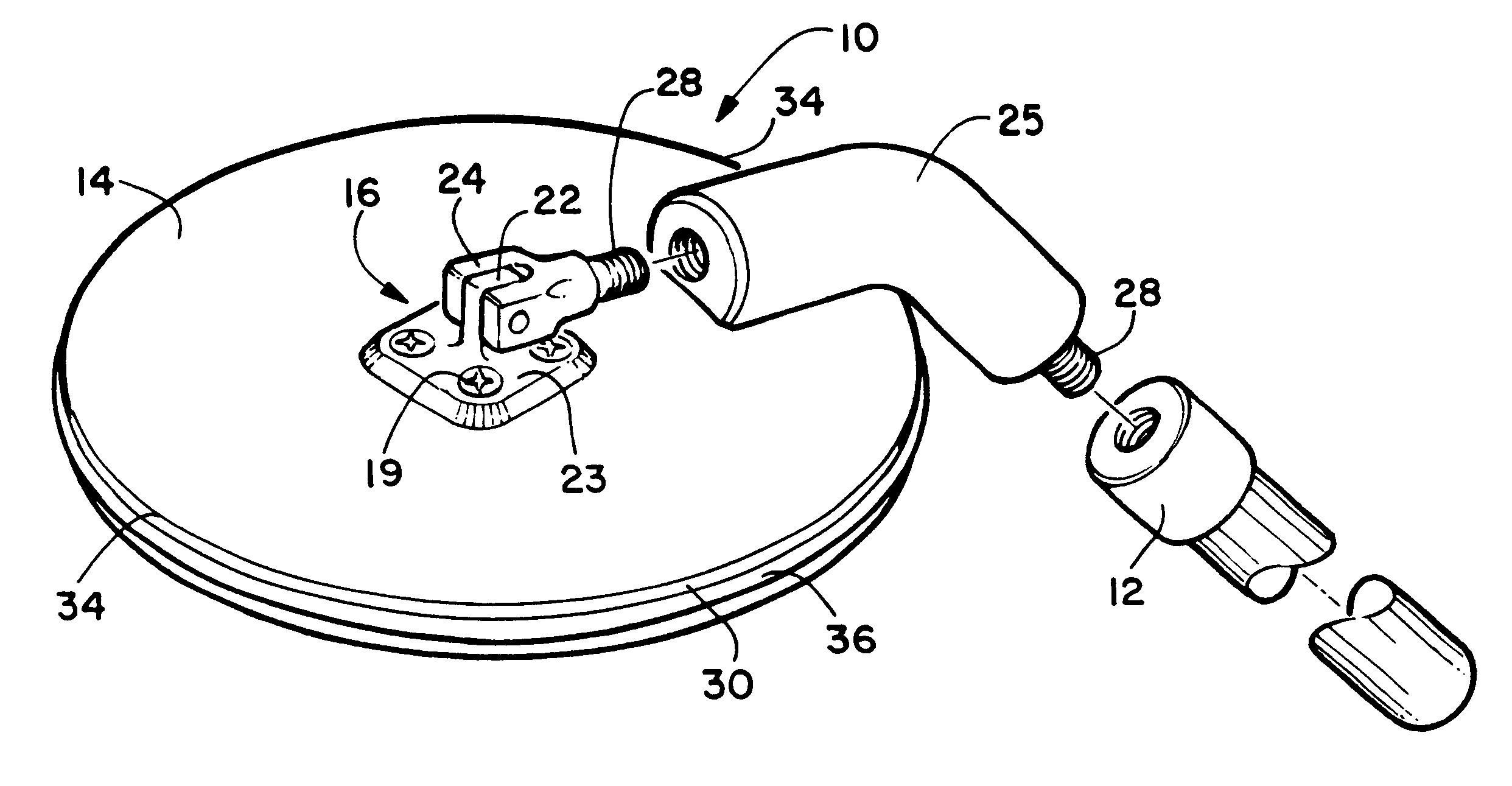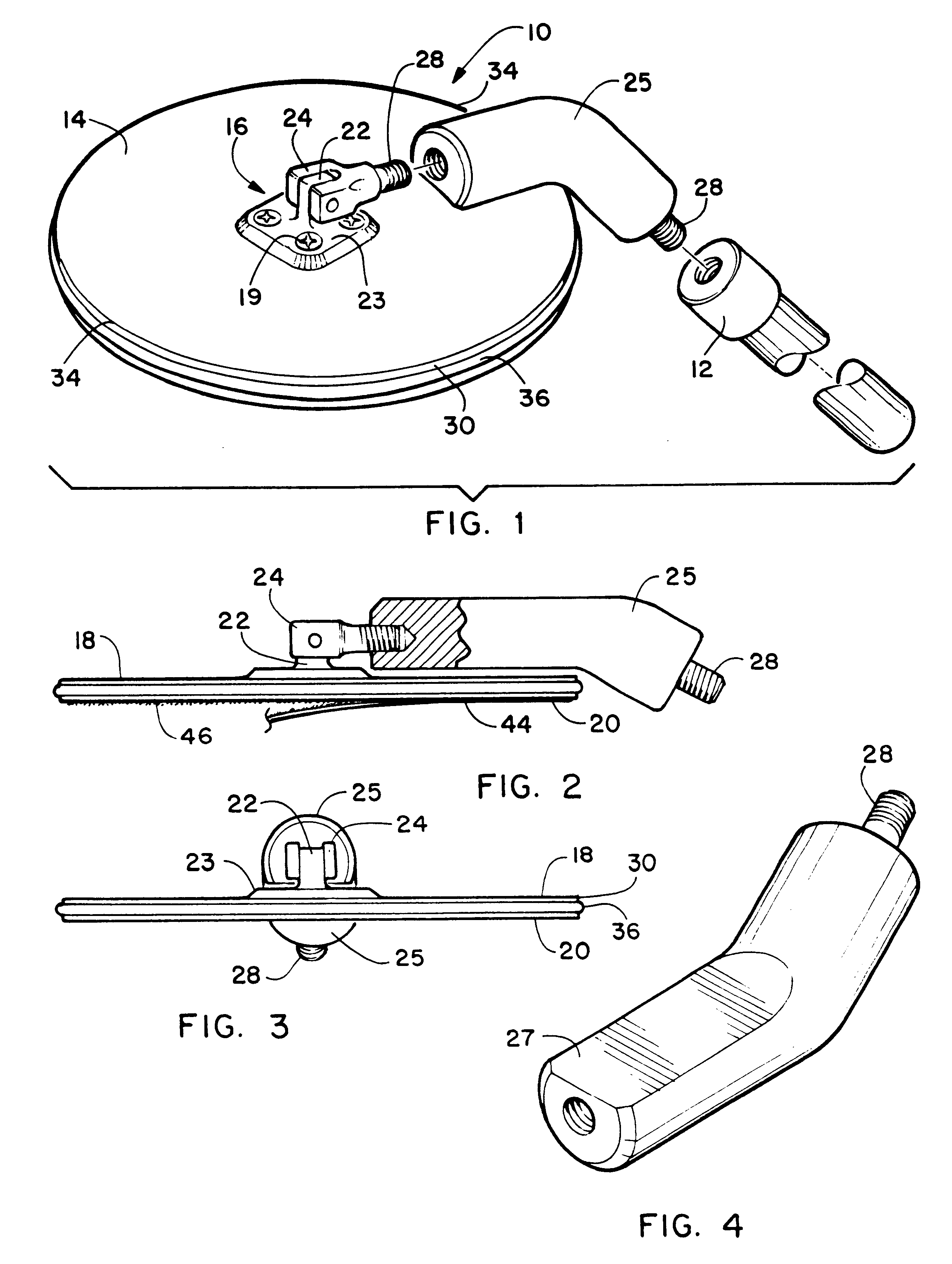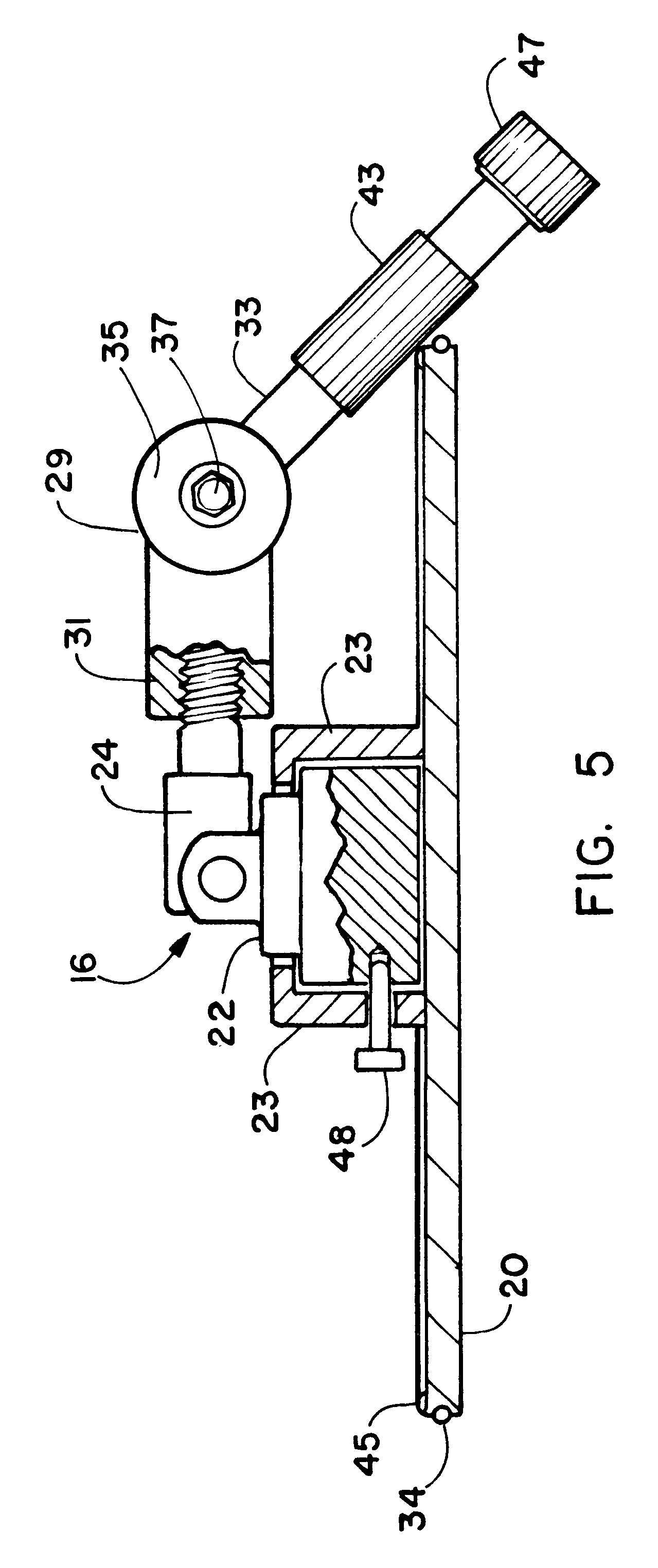Sanding block
a technology of sanding block and sanding block, which is applied in the direction of gear teeth, manufacturing tools, manufacturing apparatus, etc., can solve the problems of inability to improve, inconvenient use, and inability to fix screws or nails,
- Summary
- Abstract
- Description
- Claims
- Application Information
AI Technical Summary
Benefits of technology
Problems solved by technology
Method used
Image
Examples
Embodiment Construction
Referring now to the drawings FIGS. 1-5 disclose the preferred embodiments of the herein disclosed sanding block device 10 for attachment to, and use in combination with, an attachable pole 12 shown in phantom line.
In a first preferred embodiment as shown in FIG. 1 a sanding block 14 is round in shape. As used in this embodiment and all preferred embodiments herein, a pole mount 16 is affixed to the rear surface 18 opposite the working surface 20 of the generally planer sanding block 14.
The pole mount 16, in the current best mode, features an axle 22 rotationally engaged with a base 23 which is engaged with means of attachment to the rear surface 18 of the sanding block 14 which in this case is screws 19. The axle 22 has a center axis which is substantially normal to the rear surface 18 of the sanding block 14 however it could also be angled and such is anticipated.
Rotationally engaged with the axle 22 is a hub 24. The hub 24 thus engaged at a first end, has an attachment end that p...
PUM
 Login to View More
Login to View More Abstract
Description
Claims
Application Information
 Login to View More
Login to View More - R&D
- Intellectual Property
- Life Sciences
- Materials
- Tech Scout
- Unparalleled Data Quality
- Higher Quality Content
- 60% Fewer Hallucinations
Browse by: Latest US Patents, China's latest patents, Technical Efficacy Thesaurus, Application Domain, Technology Topic, Popular Technical Reports.
© 2025 PatSnap. All rights reserved.Legal|Privacy policy|Modern Slavery Act Transparency Statement|Sitemap|About US| Contact US: help@patsnap.com



